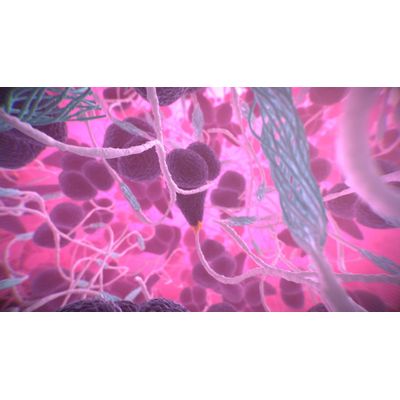

- Home
- Companies
- Inventia Life Science Pty Ltd (ILS)
- Products
- ILS Rastrum - 3D Bioprinting Technology

ILS Rastrum - 3D Bioprinting Technology
We’re not chasing pipe dreams about printed organs. Our core technology in digital bioprinting is built for fast, scalable and reproducible printing of 3D cell constructs that you can trust.
There’s been a lot of hype about 3D bioprinting. The field exploded based on readily available extrusion printing technology and was soon promising printed hearts on demand.
We’re realists. We’ve spent years perfecting technology in Digital Bioprinting, which is the best approach to fast and reliable 3D cell culture models.
At the core of Digital Bioprinting is our ability to print tiny droplets of cells and matrix components in a way that is very fast, very precise and gentle on cells. Check out this application note for more detail on droplet control.
We’ve developed bioink formulations that gel instantly on the combination of two separate droplets. In this way, cells are embedded in tunable matrix environments in a highly controllable way, without relying on light or temperature-induced gelation. Learn more about the importance of the printable matrix here.
By combining multiple matrix building blocks, with or without embedded cells, or cell suspensions alone, 3D cell models are built layer-by-layer. This exquisite control over cell and matrix environments enables 3D cell models not possible via manual methods.
Whatever the cell model, our Digital Bioprinting technology enables unprecedented speed and reproducibility well-to-well, day-to-day and site-to-site. They can be produced quickly and reproducibly.
RASTRUM™ is built for 3D cell biology, accelerating drug discovery and biomedical research with the power of digital bioprinting.
Select from our library of proprietary RASTRUM™ Matrices and 3D Cell Models, without having to waste time with 3D modelling or hydrogel engineering.
from our library of validated matrices
to suit your research question.
to suit your experimental workflow.
Incredibly easy and automated printing workflow to create your 3D Cell Model efficiently and reproducibly.
lets you execute with confidence, with no need to tweak printing parameters.
allows you to resuspend your cell pellet in bioink, add it to the RASTRUM™ Cartridge and press play to print.
and sterilisation pre and post-print means you can get back to work faster.
Printed 3D Cell Models are compatible with standard culture and downstream analysis workflows.
immediately post-print and cultivate with manual or automated media changes.
your 3D culture by standard imaging or assay techniques - the hydrogel matrix won’t interfere.
is possible by harvesting matured cell constructs from the printed 3D Cell Model.
